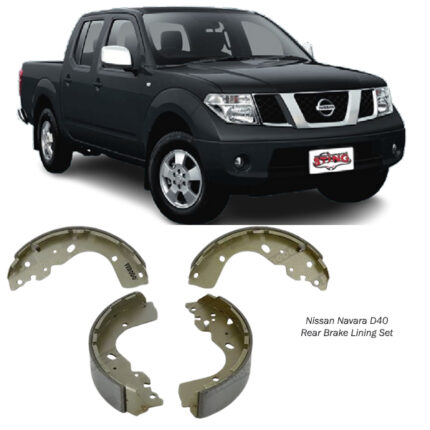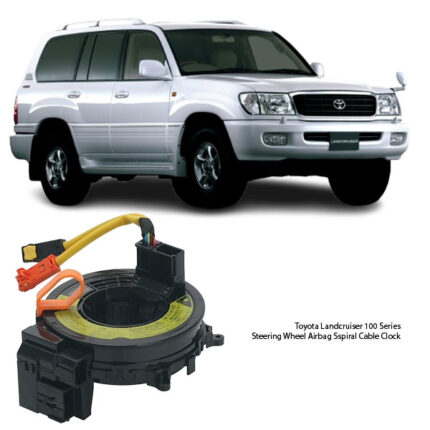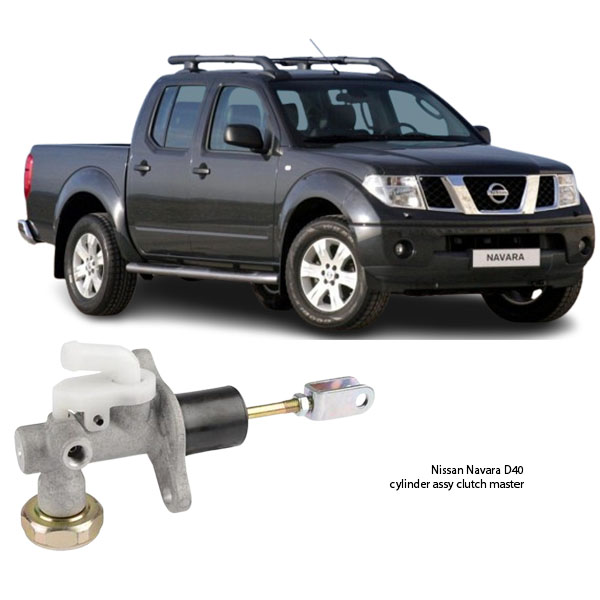-7%
Get Nissan Navara D40 Cylinder Assy Clutch Master 30610-EB30A in Kenya
The Cylinder Assembly Clutch Master is a crucial component in a vehicle’s hydraulic clutch system, responsible for transmitting hydraulic pressure from the clutch pedal to the clutch slave cylinder. This allows smooth and efficient engagement and disengagement of the clutch, making gear shifts easier.
This guide will provide a detailed breakdown of the clutch master cylinder, including its function, working principle, symptoms of failure, causes of wear, maintenance tips, and replacement procedure.
2. Function of the Clutch Master Cylinder
The clutch master cylinder plays a key role in the operation of a hydraulic clutch system, performing the following functions:
2.1. Hydraulic Pressure Generation
- Converts the mechanical movement of the clutch pedal into hydraulic pressure.
- Sends pressurized brake fluid or clutch fluid to the clutch slave cylinder.
2.2. Clutch Engagement and Disengagement
- When the clutch pedal is pressed, it activates the master cylinder, forcing fluid through the hydraulic lines.
- This action moves the clutch slave cylinder, which in turn disengages the clutch from the flywheel.
- When the pedal is released, the fluid returns, re-engaging the clutch.
2.3. Smooth and Effortless Gear Shifts
- Provides a smooth clutch operation for seamless gear changes.
- Reduces driver fatigue by making clutch pedal operation easier.
2.4. Protection Against Overloading
- The hydraulic system helps distribute pressure evenly, reducing stress on clutch components.
3. Components of a Clutch Master Cylinder Assembly
The Cylinder Assy Clutch Master consists of several key parts:
3.1. Master Cylinder Body
- Houses the internal components and fluid passages.
- Made from aluminum or cast iron for durability.
3.2. Reservoir Tank
- Stores clutch fluid (brake fluid) and supplies it to the cylinder.
- Usually made of plastic and attached to the master cylinder.
3.3. Piston and Piston Rod
- The piston moves forward when the clutch pedal is pressed, generating hydraulic pressure.
- The piston rod connects the clutch pedal to the piston inside the cylinder.
3.4. Return Spring
- Helps the piston return to its original position when the pedal is released.
3.5. Seals and O-Rings
- Prevent fluid leaks and maintain hydraulic pressure.
3.6. Fluid Inlet and Outlet Ports
- Inlet port connects to the reservoir for fluid intake.
- Outlet port sends pressurized fluid to the clutch slave cylinder.
4. Working Principle of a Clutch Master Cylinder
The operation of a clutch master cylinder follows a simple hydraulic principle:
4.1. Clutch Pedal Pressed (Engaging the Clutch)
- Driver presses the clutch pedal.
- The pushrod moves the piston inside the master cylinder.
- The piston forces fluid through the hydraulic line to the clutch slave cylinder.
- The clutch slave cylinder moves the clutch fork, disengaging the clutch plate from the flywheel.
4.2. Clutch Pedal Released (Disengaging the Clutch)
- When the pedal is released, the return spring pushes the piston back to its original position.
- The fluid returns to the reservoir, and the clutch re-engages.
5. Symptoms of a Failing Clutch Master Cylinder
When the clutch master cylinder starts failing, the following symptoms may appear:
5.1. Soft or Spongy Clutch Pedal
- Air bubbles or fluid leaks inside the hydraulic system can cause inconsistent pedal pressure.
5.2. Difficulty in Gear Shifting
- If the clutch does not fully disengage, gear shifting may become hard or impossible.
5.3. Clutch Pedal Sticking to the Floor
- A worn-out piston seal or internal failure can prevent the pedal from returning to its original position.
5.4. Clutch Fluid Leaks
- Leaking clutch fluid around the clutch pedal or master cylinder indicates seal failure.
5.5. Low Clutch Fluid Levels
- If fluid levels frequently drop, it could be due to leaks in the master or slave cylinder.
5.6. No Pressure in the Clutch Pedal
- A broken seal or fluid loss can cause the clutch pedal to lose resistance.
6. Causes of Clutch Master Cylinder Failure
Several factors contribute to clutch master cylinder failure:
6.1. Normal Wear and Tear
- Over time, the piston and seals wear out due to constant friction.
6.2. Contaminated Clutch Fluid
- Moisture, dirt, or debris in the fluid can damage seals and cause internal corrosion.
6.3. Fluid Leaks
- Cracked or loose seals lead to loss of hydraulic pressure.
6.4. Overheating and Excessive Pressure
- High temperatures and excessive clutch use cause fluid degradation and part failure.
6.5. Air in the Hydraulic System
- Air bubbles inside the clutch fluid line reduce hydraulic pressure, affecting performance.
7. Maintenance Tips for a Long-Lasting Clutch Master Cylinder
Proper maintenance can extend the lifespan of your clutch master cylinder:
✔ Check Clutch Fluid Levels Regularly – Low fluid levels indicate possible leaks.
✔ Use the Recommended Fluid – Always use DOT-approved brake fluid for optimal performance.
✔ Bleed the Clutch System – Removes air bubbles that cause a spongy pedal feel.
✔ Inspect for Leaks – Check for fluid drips around the clutch pedal or master cylinder.
✔ Avoid Aggressive Clutch Use – Rapid or heavy clutch use accelerates wear.
✔ Replace Fluid Periodically – Dirty fluid reduces efficiency and can damage seals.
8. Replacement Procedure for a Clutch Master Cylinder
Replacing a failing clutch master cylinder requires precision. Here’s an overview of the process:
8.1. Tools Needed
- Wrenches and socket set
- Brake fluid (DOT-3, DOT-4, or as recommended)
- Clutch bleeder kit
- Hose and catch bottle
8.2. Steps to Replace the Clutch Master Cylinder
- Locate the Clutch Master Cylinder – Usually mounted on the firewall near the brake master cylinder.
- Drain the Old Fluid – Use a catch bottle to prevent spillage.
- Disconnect the Hydraulic Line – Remove the fluid hose leading to the slave cylinder.
- Detach the Clutch Pedal Linkage – Remove the pushrod connection inside the vehicle.
- Unbolt the Old Cylinder – Remove the securing bolts and take out the master cylinder.
- Install the New Cylinder – Position the new master cylinder and tighten the bolts.
- Reconnect the Hydraulic Line and Pedal Linkage.
- Refill with Fresh Clutch Fluid.
- Bleed the Clutch System – Remove any air trapped in the hydraulic line.
- Test the Clutch Operation – Ensure smooth pedal movement and proper engagement.
9. Conclusion
The Cylinder Assembly Clutch Master is essential for proper clutch operation in manual transmission vehicles. If it fails, clutch engagement becomes difficult, leading to gear shift issues and fluid leaks.
Follow us on Facebook for more parts.



